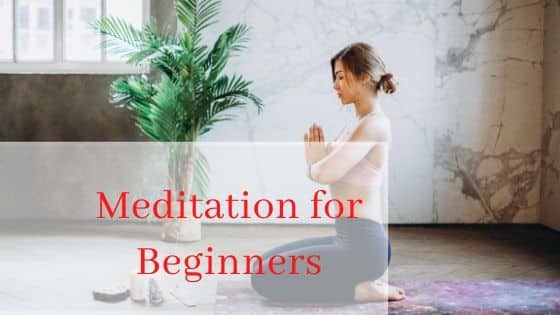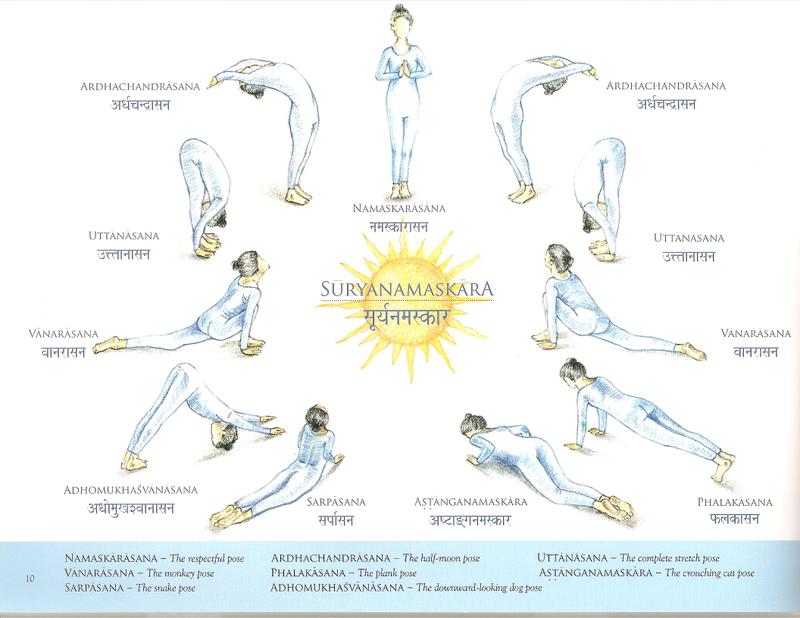
Here are some tips that you can follow before you sign up to your first yoga class. First, let's talk about what to wear and what to take to class. Your instructor will be happy to address any concerns or questions you may have if you are a first-time student. If you are anxious or have limitations, the first variation is better. You can also listen to your body and take rests if necessary. Don't let the yoga teacher discourage you - it's perfectly natural to want to push yourself and try the next level.
The next tip relates to preparing for yoga class. Beginners should arrive 15 minutes before class starts to allow enough time to locate a seat and use the bathroom. You'll also have enough time to get acclimated to the room before class starts. Rushing into class can lead to jitters, which will transfer onto the mat. New students often feel nervous about their first yoga class. This stress will only increase if you arrive late.
The next tip is clothing. Even though most people will be wearing yoga pants and tops during the practice, they should still be comfortable. It should be loose enough to allow for sweat absorption and movement. If you're new to yoga, be sure to drink lots of water before class. Water will flush out toxins, and aid you in your practice. Avoid eating large meals before attending class. This will ensure that your practice is as safe as possible.

Make sure that you have fun in your classes. It can cause you to feel jaded and irritable if you compare yourself to others. Your yoga class should not be about comparing yourself to others. Don't worry about what others are doing or how you compare to them. Instead, try to be kind and respectful towards yourself. Beginners can try yoga until they find the right posture for them.
Another tip is to be punctual. No matter where you're studying, being on time for yoga classes is an important trait. You'll often feel rushed and annoyed when the class is crowded. But even if you're unable to make it on time, you can still practice as often as you want. Make sure you have the proper equipment and clothing when you prepare for your class.
You shouldn't rush into a yoga class. After you finish, take your time. This is the most important part any yoga class. The first class can be a milestone. But, you want to keep practicing until you are comfortable. This is because the effects of yoga are cumulative. You'll experience more benefits if you do more yoga.
Yoga can be challenging for those who are new to it. It is not easy to practice yoga. You should be patient with yourself and your body. Do not push yourself too hard. Your body will adjust to your practices slowly so be patient. You need to be able to move freely in your clothes. After a few weeks, you'll notice that you're able to do all the poses that you're comfortable with.

Respect the teacher is important. You have signed up for this class in order to be removed from your daily life. You should keep your phone off the table. You may be tempted to leave your phone in your car or in a locker while you're in class, but try not to interrupt the teacher. You'll only harm yourself and others. If you're a beginner, you have many tips to make your practice more fun.
The best time to practice yoga is early morning. You're awake and the sun is shining. You can start practicing yoga by starting with the simplest postures first if you aren’t familiar with it. This will allow you to get comfortable with the movements and increase your confidence. If you haven't done yoga before, start with a simple nursery rhyme to warm up. It will help you feel more comfortable and make your yoga practice last longer. This will give you a head start.
FAQ
Is Cardio Better Than Strength Training?
Both are equally effective. However, cardio is more effective if you're looking to bulk up faster.
Cardio burns more calories per hour than strength training, and also burns more fat.
Strength training builds muscle mass, but it takes longer to achieve this goal than cardio.
What is your favorite workout to build muscle mass?
There are two major exercises that you should do when you want to build muscle mass. These are isolation exercises and compound moves. Isolation exercises target particular muscles, while compound movements focus more on several groups at once.
It is important to do exercises that work all of your major muscles groups. This ensures that each session is challenging.
MyFitnessPal, an app that tracks your actions, can be used to help you keep track. It can track everything from calories burnt to weight lifting. It also allows you to create meal plans customized for your goals.
Do weightlifting burn fat faster?
Weight lifting will help you burn more fat, but it's best to combine it and cardio.
You should do weightlifting after your cardio workouts to maximize its benefits.
Weightlifting is a good way to lose weight. It increases your heart beat and oxygen consumption.
You will not notice any changes in your body composition if you don’t combine it and cardio.
Which workout is the most effective for men
It depends on what you're looking for. Cardio workouts are great if you're looking to lose weight. They burn calories much faster than strength-training exercises.
However, strength training can be beneficial if you only want to build muscle mass. It increases lean mass.
Both types can be used to improve your overall wellbeing.
I recommend HIIT, or sprint interval training, if you want fast results. This type of training can help you lose fat quickly and increase your metabolism. This type of training also increases your endurance, allowing you to train even when you are tired.
What does butter do to men?
Butter is one source of saturated fats. This type is beneficial for healthy skin and hair as well as stronger bones.
Vitamin K in butter also prevents bleeding from cuts, bruises and other injuries. Vitamin K is combined with vitamin C to prevent bruises.
Butter is also rich mineral, including calcium and phosphorous. These elements are good for teeth and bones.
Butter has its limitations. Butter has high cholesterol. Research has shown that high levels of cholesterol could increase your chances of developing cardiovascular disease.
Butter also contains high amounts of saturated fat, which contributes to obesity and increases cholesterol.
But if butter is a must, you can spread it on bread and not dip it in soups or salads. Bread absorbs oil more than pasta or potatoes.
What is the best workout order?
It all depends what you want. First, lift heavy weights if you are looking to increase muscle mass. Next, you can move onto cardio. You can then go to strength training if your goal is to lose weight.
Cardio can be done if you want to just lose fat. Then add strength training after.
Do cardio first if you are looking to increase muscle mass. It stimulates growth hormones that help build muscle mass.
Eat before you go to the gym. This will fuel your muscles and make them work harder. This will make you feel better while working out.
Can I consume alcohol while working out?
Yes. Alcohol can increase energy expenditure, speed recovery time, and reduce soreness.
Alcohol also increases insulin sensitivity, making it easier to absorb glucose.
However, alcohol can cause dehydration, which can slow down your metabolism. It also reduces testosterone production, which may decrease muscle-building potential.
These are the reasons women should not drink alcohol before going to work out. Women who drink heavily should wait at least 24 hours between drinking and working out.
Breastfeeding women should stay away from alcohol.
Men should limit their alcohol intake to just one drink each day.
Statistics
- The PRS enabled risk stratification for overall prostate cancer and lethal disease with a four-fold difference between men in the highest and lowest quartiles (HR, 4.32; 95% confidence interval [CI], 3.16-5.89). (pubmed.ncbi.nlm.nih.gov)
- By John Thompson Take a whopping 38% off a set of PowerBlock Pros. (menshealth.com)
- Cardmembers earn 5% Back at Amazon.com with a Prime Credit Card. (amazon.com)
- According to the American Heart Association, blood pressure should be checked at least once every two years, beginning at age 20. (my.clevelandclinic.org)
- Are You One of the 20% of Guys (mh.co.za)
External Links
How To
How do I lose weight while working out?
Exercise helps you lose calories by increasing your metabolism and oxygen intake.
You'll lose weight safely if you exercise at moderate intensity.
These tips can help you to burn fat while training:
-
Cardio exercises like walking, running (or jogging), swimming, cycling, running, and/or elliptical training are all good options.
-
For 30 minutes, do it three times a week.
-
Add strength training to your workouts if you are looking to lose more weight.
-
Avoid intense exercise. You can build muscle and not break down muscle tissue.
-
When exercising, make sure to drink lots of water. Water flushes out toxins and helps keep the body hydrated.
-
After exercising, you should drink low-fat protein drinks. Protein shakes can help boost energy and repair muscles.
-
You can eat smaller meals throughout the day so that you don't feel hungry in between meals.
-
Don't skip breakfast! Skipping breakfast can make you tired and sluggish.
-
Take care to your mental well-being. Stressful situations can slow metabolism.
-
Keep a positive attitude. Studies show that people who believe they are overweight gain more weight then those who think they are attractive.
-
Get enough sleep. It is harder to lose fat if you don't get enough sleep.
-
Be active. Make sure you get up and move every hour.
-
Maintain a healthy diet. A healthy diet will help you feel fuller for longer.
-
Find relaxation techniques. Your body won't release stress hormones that cause muscle tissue destruction if you have a tense mind.
A balanced diet contains all necessary nutrients for growth and development.
Eat six small meals each day instead of three large ones. This gives your body more time to digest the food you eat.
For strong bones, we need 500 mgs of calcium daily. Calcium is available in dairy products like milk, yogurt, fortified soy beverages, orange juice, cereal, bread, and cereals.
Calcium comes from leafy green vegetables, beans, tofu, nuts, seeds, and cheese.
Your body needs vitamin D to absorb calcium. Vitamin D is found in certain fortified foods, such as egg yolk and fatty fish.
Vitamin E is vital for your skin's health. It can be found as a vegetable oil, wheat germ, peanuts or almonds.
Your body requires zinc for normal immune function and wound healing. Zinc can be found as a mineral in oysters.
Zinc deficiency can cause fatigue, loss of appetite, depression, and impaired immunity.
Too much sugar leads to insulin resistance. This results in higher blood glucose levels. Insulin resistance causes weight gain.
Insulin resistance occurs when the bloodstream is full of free radicals. Free radicals can be molecules with unpaired electrons that cause damage to cell membranes.
The most common sources of free radicals include food additives.
Free radical damage can lead cancer, heart disease or diabetes, arthritis, asthma, or other forms of aging.
Antioxidants are essential for preventing free radical damage. Antioxidants protect against oxidative damage.
Vitamin C, beta carotene (found within citrus fruits, carrots, sweet potatoes and spinach), Vitamin E (found inside nuts, olive oils, avocados and eggs), and Vitamin C (found among mangoes.
Selenium, manganese (and zinc) are other antioxidant nutrients.
Selenium protects cells against oxidative damage from free radicals. Selenium may be found in Brazil nuts as well tuna, liver and kidneys. It can also be found on shrimp, cod, turkey, beef lamb, pork, chicken, and other foods.
Copper protects the brain and eyes as well as the lungs and red blood cells. Copper is found in shellfishes, poultry, meat, organ meats, and other foods.
Manganese forms an essential part of bone structure. Manganese is found as a component of bone structure in brown rice (spinach, bananas), prunes, raisins and oatmeal.
Zinc is required for normal growth, reproduction and wound healing. Zn can be found in lean cuts, white fish, poultry, eggs, and other foods.